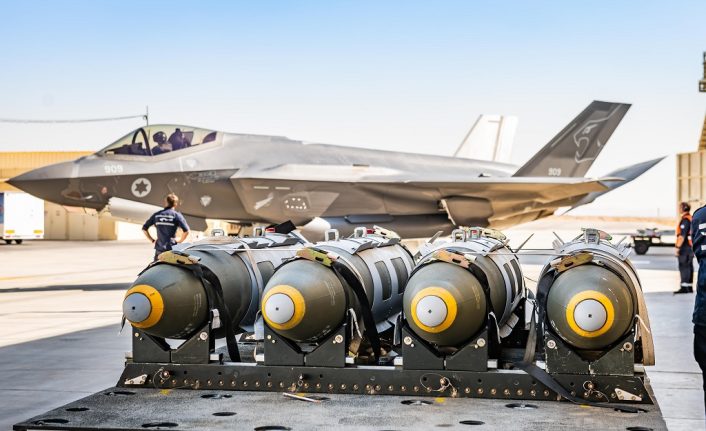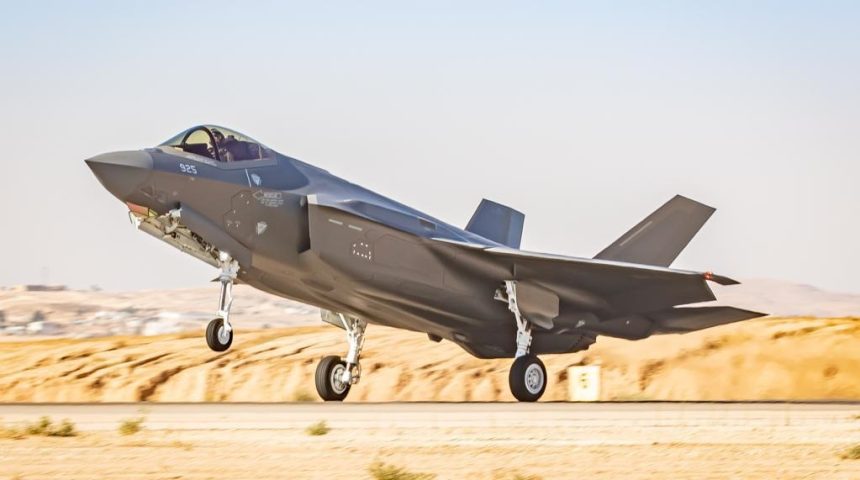The claims follow the latest exercises during which the IAF simulated a future strike against Iran’s nuclear sites.
In response to Iran’s continued development of nuclear capabilities, the Israeli military is boosting its capabilities and preparations for a future strike against Tehran’s nuclear sites. The tensions around the nuclear program are being exacerbated every day, with Iran now also saying that it is removing 27 International Atomic Energy Agency’s surveillance cameras from its nuclear facilities, preventing international inspectors from gaining a clear picture of Tehran’s uranium enrichment work.
As part of the new capabilities being fielded for the attack preparations, the Israeli Air Force is claiming it is now able to fly its F-35I Adir 5th gen. fighter jets from Israel to the Iran without requiring air-to-air refueling. The claim is vague and without further details, however, based on reports from last year, it is highly probable the IAF fielded new stealthy external fuel tanks for the F-35 fleet.
The Israeli Air Force was the first operator to ask for external fuel tanks for the F-35 early during the JSF program. Reports from 2021 mentioned that the IAF Flight Testing Center (FTC) at Tel-Nof AFB was developing the external drop tanks that will help the Adir to complete long-range missions over “third circle” targets, such a hypothetical strike against Iranian objectives, without the need for aerial refueling.
The new external fuel tanks were said to be meant to not degrade too much the low observability of the F-35 and this was being done mainly through the shape and materials chosen. Something similar is being developed for the F-22 Raptor and, although the two projects are not related, the results could be very similar.
The F-22’s new Low Drag Tank and Pylon (LDTP) are designed to be stealthier and more aerodynamically efficient than the current 600-gallon fuel tanks. The design id intended to offer increased persistence and range while maintaining lethality and survivability, reducing drag and facilitating supersonic flight with external stores.
IDF sources mentioned last year that the development and production process of the new external fuel tanks for the F-35I Adir would not exceed two years. Since the first reports about the ongoing planning and initial development process of a new stealthy 600-gallon drop tank were published in 2019, the claims about the new capability could be explained with the fielding of the new drop tank. Let’s not forget, however, that Israel was also working on initial design studies for a conformal fuel tank (CFT) specific to the F-35, but it is not known if this project is still alive.

The F-35A, from whom the F-35I was developed, has an internal fuel tank capacity of slightly less than 18,500 lb (8,391 kg, the exact amount varies depending on the source) and a non-classified range and combat radius in excess of 1,187 nm (2,200 km) and 594 nm (1,100 km), respectively. The fuel is contained in several tanks inside the wings and fuselage to preserve the stealth profile. With the two 600-gallon drop tanks under its wings, the F-35I would increase its total fuel capacity by approximately 40%, as each tank would add about 4,000 lb of fuel for a total of more than 26,500 lb.
In addition to the claims about the extended range without AAR, the IAF said it recently integrated a new unspecified one-ton bomb into the arsenal of weapons used by the Adir that can be carried inside the weapon bays. According to The Jerusalem Post, the bomb in question is made by Rafael and said to be autonomous and protected against jamming and electronic warfare systems.
Reports from few years back mentioned that the F-35I Adir would receive the Rafael Spice EO/GPS guided bomb and the Israel Military Industries Delilah man-in-the-loop-controlled cruise missile. Lockheed Martin and Rafael Advanced Defense Systems even signed a memorandum of understanding to evaluate potential markets and customer requirements for Rafael’s Smart, Precise Impact and Cost-Effective (Spice) stand-off weapon guidance kits in 2018.
The MOU covers both the Spice 1000 (453 kg / 1,000 pound weight class) and Spice 2000 (907 kg / 2,000 pound weight class) variants, with standoff ranges of 100 km and 60 km respectively. The Spice guidance kit is said to be insensitive to GPS jamming and this is fitting with the brief details provided by The Jerusalem Post. Adding the detail about the one-ton bomb, it is safe to say that the bomb in question is the Spice 2000.
The claims follow the recent large-scale drills simulating attacks against Iran held over the last month. According to a statement by the Israel Defense Forces, the drills included “long-range flight, aerial refueling and striking distant targets.” Reportedly, more than 100 aircraft participated in the 10,000 kilometers night long-range strike exercise, with the jets circling Cyprus and then conducting mock airstrikes in Israel.









